Tumbes
Hello everyone!
I hope that each and every one of you is well! On this occasion we are going to continue our journey through Peru, we will travel to the north, directly to the Northern coast of Peru where it borders with Ecuador.
It is not only a place with beaches, but also interesting tourist prospects for each one of us, as well as being somewhere that has many natural wonders that we will be discovering little by little.
I had the opportunity to get to know the north of Peru a couple of years ago and truthfully, I fell in love with everything that I am going to describe here: the museums, beaches, and the sunshine that is the envy of the grey skies of my beloved Lima.

Tumbes is synonymous with beach, sun, the border, but most of all it is a colourful city that is really hot!
Throughout this journey we will discover the city of Tumbes and its entertaining history, a place where you can eat the richest black-shelled ceviche that can be found only in Tumbes, and we will travel to see the Tumbes hand-crafts which are famous for being made with things extracted from the sea of this blessed land which has given a lot of virtues. We will see the enigmatic mangroves of Tumbes which have been declared a Natural Sanctuary by the State of Peru, as well as the northern part of Tumbes where Peru borders with our neighbourhood brother of Ecuador. Let us go, dear readers, and get to know this tiny region of Peru that has almost everything, and especially is part of the daily northern route that Peruvians take to get to the north. For example, to explore the Señor Sipan, like I did, or the city of Chan Chan which is the largest one and a UNESCO Cultural Heritage Site, its burial grounds like Huaca Rajada. All of this I'm going to talk about to try and extend my descriptions...
Here I have detailed the points for you and divided this article for the region of Tumbes:
- Mototaxis in the city of Tumbes
- El Estadio, a place to eat
- Beaches in Tumbes
- Places in the north of Tumbes
- Discover the nature of Tumbes
- The crocodile Tumbes
- Port 25
- Crabs and black shells in Tumbes
- The town of Aguas Verdes, bordering with Ecuador
- Huaquillas the town in Ecuador bordering with Perú.
Now we can take advantage of the promotions that the airline LAN are promoting to come to Tumbes. For example, in less than a blink of an eye, we can meet you at your airport and when you arrive here you'll realise how close everything is. A little more and you can cross the border to go to Ecuador, but as this blog is more about Peru, I won't add more on this. Let's start falling in love with Peru and the tourist areas!
Location of Tumbes
Tumbes can be found some 1, 200km from the capital Peru (Lima), two hours from Mancora and 30 minutes from the Ecuadorian border.
Tumbes is a busy city where the heat has been transformed into colour, for the colourful tour only need to go to the Plaza de Armas to see the façades of various colours, in addition to the Church, its streets with extensive trade and also an interesting sample of places where you can eat very rich food, especially the black shells! That ceviche made with black shells that go out fresh and have just come out of the sea... only in Tumbes! .
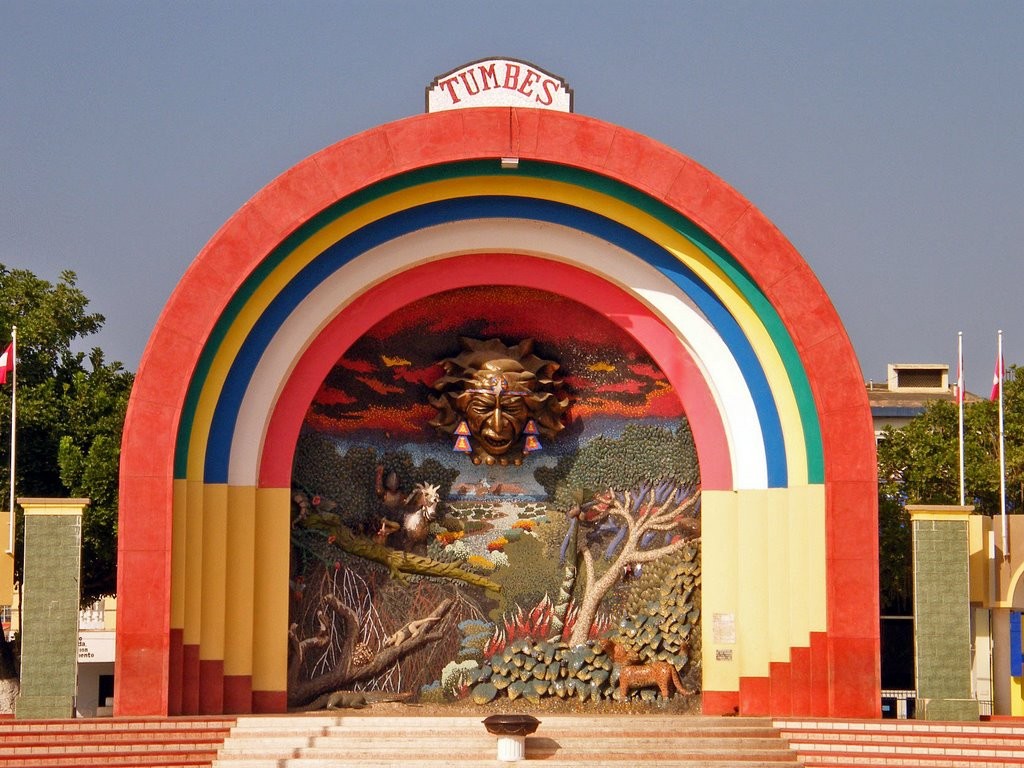
In the Municipality we can see shells adorned in their beauty, as well as different colours which in turn can verify that Tumbes is a city of colours where joy never ends, in addition to having a perfect climate.
You can find trees in Tumbes called "matacojudos" that have large seeds that can hurt your head! They are orignially from Africa, but nowadays they have adapted to the climate of the city and they give the necessary shade to refresh us from the intense northern Peru sun.
In accordance with the latest statistics from Peru related to the arrival of tourism, in the last few years, Tumbes has started to receive a large variety of national tourists, particularly from the southern zone of Peru and also from the city of Lima itself, where I myself am from.
Today in Tumbes you can find an airport that is basically the final destination on the northern route, but people also travel to the regions of Lambayeque, La Libertad and Piura. However, there is no doubt that the people arriving here marvel at its beauty, because here there is a radical change in the landscape: on the one side there is the blue sea, and on the other a green forest. Tumbes is known as the place where the forest and the sea meet.
We are going to see that the entirety of Tumbes is related with the sea, as the same River Tumbes is brown with the sand that runs and flows into the Pacific Ocean. As well as showing off this river in front of its surprising Malecon, on the other hand very close to the river you can find the newspaper of "I Peru" that is responsible for giving tourist information to visitors.
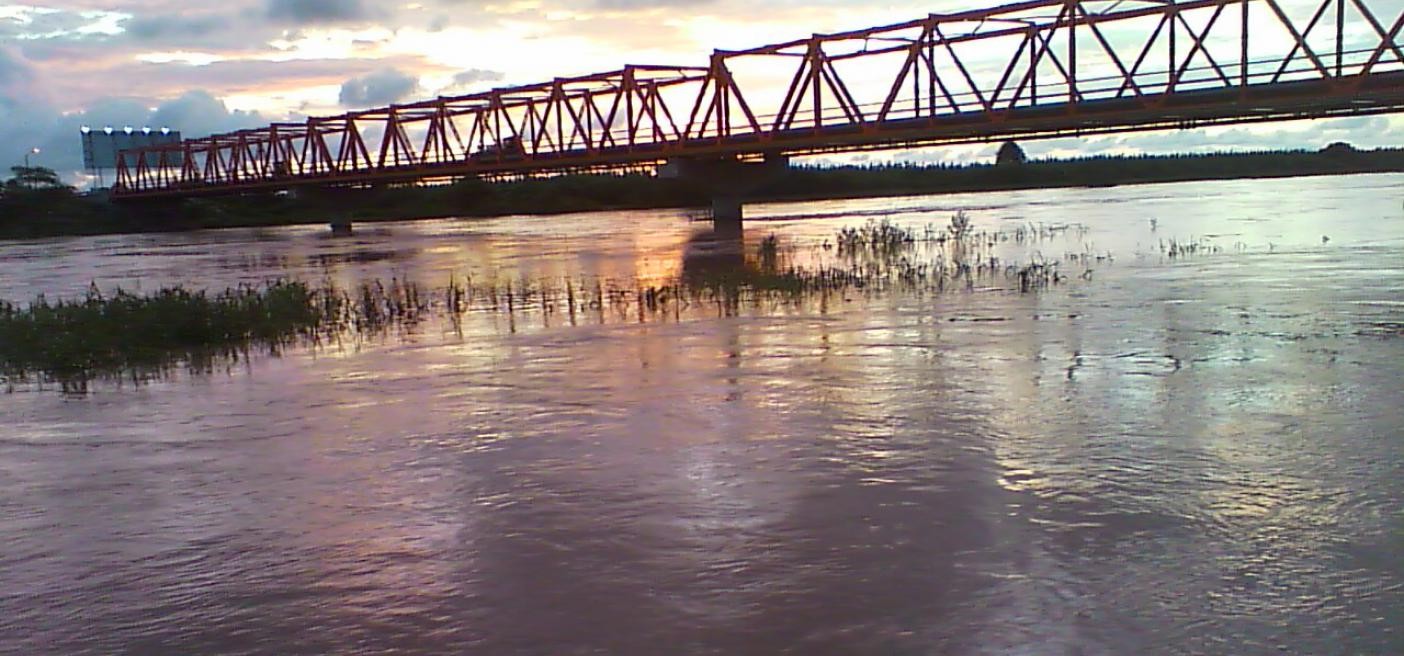
Before the arrival of the Spanish, the ancient area of the Tumbesinos could be found in a different part and Tumbes was known as the Nueva Valencia del Sur. However, despite the blessing of the sea but, when they come to the city of Tumbes they'll get a surprise like the one I received myself when I arrived... The city of Tumbes is not found in front of the sea! Instead, it is several kilometres away from it.
Furthermore, the name given by the Spanish was changed by the old inhabitants of the Tumbes, with it we realise that the local tradition is better than the official names given by the Spanish Crown.
Although the homes in Tumbes are not from the Colonial era, you can still see its presence in the buildings from the start of the Republic that are made from Guayaquil wood brought over from the neighbouring country of Ecuador.
Home made crafts with a sea smell
Something that really interests me about Tumbes is that everything is made with materials from the sea to sell souvenirs like bracelets, purses, key rings, ornaments and much more. For example, when I arrived here I bought a bracelet and a purple wallet for my mum made with shells - and of course don't forget to ask for your discount if you buy more than one thing because it's something we always do in Peru.

The art in Tumbes is without a doubt ready to bring home, the waves bring differrent materials from the seabed that they can use, so when you come, help these salespeople! Buy a present that is economically sustainable.
Mototaxis in the city
Just like in the jungle, and like when you visit the central jungle area, as well as the cities of Tingo Maria, La Merced or Oxapampa, here in Tumbes the most prevalent means of transport are the rich and fast mototaxis, it's a sea of mototaxis that take you everywhere to visit this city of abundant Peruvian heat.
However, it is better to walk to discover the things that can be found in the city centre.
El Estadio - to eat
Tumbes has a stadium that is neither a stadium nor a restaurant with their marine products like black shells and crab, as well as rich Peruvian ceviche... Let's eat!
The decoration of the stadium is like it were a football pitch, so therefore if you are a lover of sport you should come here, and if you don't like football... You should still come because the taste is incredible.
Beaches in Tumbes
Near the sea of Tumbes life is tastier, just 20 minutes away we have the Caleta La Cruz where there are small boats with houses with their hammocks. This is said to be the place where the Spaniards landed to found the first Spanish land, during the time of the colonisation of America and the empire of the Tahuantinsuyo of the Incas, this cross still exists today and is protected.
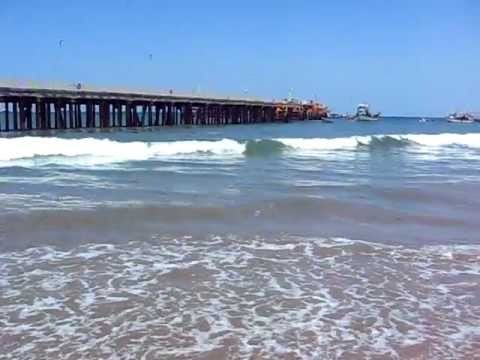
This area doesn't have large hotels, but it has a lot of enviable wildlife as well as intense sunshine like that which only exists in this part of Peru, you should come and see for yourself, let yourself succumb to the marvels that this part of Peru holds for you.
Northern Tumbes
In the north of Tumbes the Port of Pizarro can be found just 20 minutes from the city of Tumbes. People also arrive here to eat rich food and enjoy the nature, this coastal town lives in harmony with its nature and the daily visitors that arrive there.
Furthermore, you can also find an interesting show here about the history of petrol, however those years are behind us as now it is a tourist point of interest within Tumbes and has its own variety of flora and fauna.
Pizarro Point is not found by the sea but instead amongst the mangrove trees and the rivers. This is the interesting thing about this place, as only in a couple of hours the sea can rise and with this, the fishermen begin their daily catch in this hand-made prison to see the generosity of the sea on the northern coast of Peru.
The fish that you can find here are sole, rosemary, etc. All of these fish are from Lima and of course from the city of Tumbes itself to go into their rich seafood dishes.

Here it also acts as an interpretation centre in which it explains to you all the things that you can do when you get on one of the boats.
There we can even find hand crafted items that are works of art made with the relics of the tree bark from banana trees. Something that I will call to your attention is the crocodile that seems real but that is also made of the same material from the banana tree.
The crafts are also present here so you can be able to take a piece of the sea of Tumbes home with you and you know it, here we have another point where you can buy more crafts.
Getting onboard the water
At the Port of Pizarro you are always going to find boat trips that can take you around one of the most important attractions in Rumbes, the "Mangroves of Tumbes". They are a speciality of nature and unique in Peru where the trees have learned to live amongst the mud and the water that makes it resemble an island in the river.
Coming here will make you feel as if you are on the other side of the world, where each space is unique and marvellous, where you can enjoy the intense sun and the wind caressing your face during the boat ride. It will make you think and reflect on the importance of protecting these types of natural sanctuaries in Peru.
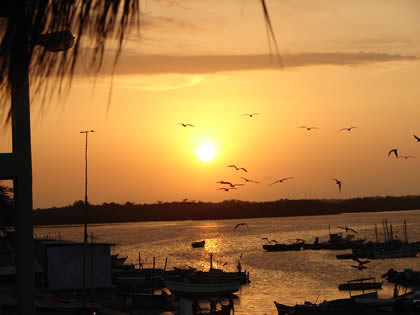
Everything surrounded by mangroves that meet with the sea, this naturally brown river is where, as you go through, you find yourself in the union between the mangroves and the sea.
Without a shred of doubt, one of the places that will catch your eye the most is when you pass through the island of birds where you will find white birds known as herons and frigate birds. These emit a natural sound that sounds as if they were welcoming you to their territory - we must remember that this is a protected area by the Peruvian state and so we must treat the space with respect and not damage the atmosphere and nature found here.
In certain parts of the trip you can disembark, but remember that this depends on the time of day that you go, due to the potential rise of the water.
The crocodile of Tumbes
Very close to here you can find a breeding ground for Tumbes crocodiles, an animal that is in danger from extinction. Inside this breeding ground we can find up to 300 types of crocodile.
The mangrove forests have different animals and flora surrounding it. It has its own gastronomy, history, nature, a fishing point where you can meditate, play sport, have a picnic or look at the biological diversity that Tumbes has. Whats more, it is an inexpensive option just around the corner in Peru.
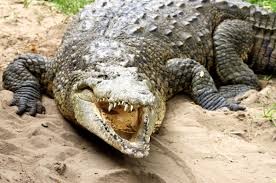
Pizzaro Port is a marvellous point in Tumbes where you can begin and end your journey through the mangroves, the place where Peru starts and finishes. The riches here are the riches of Peru and here we should value each and every thing that we can find, in order to appreciate even more the great biodiversity found here.
Port 25
Some 25 minutes away from the city of Tumbes, we have access to the incredible mangroves. It is here that we can see the people that are in charge of the extraction of black shells and crabs, as well as finding local tour guides and of course more places to buy Peruvian handicrafts!
Port Capones is a point of tourist interest, you can access it via Port 25, it is so big and has a sanctuary which has 2, 900 hectares surrounded by natural canals that can be used as a way of accessing and controlling the survival and development of tourism.
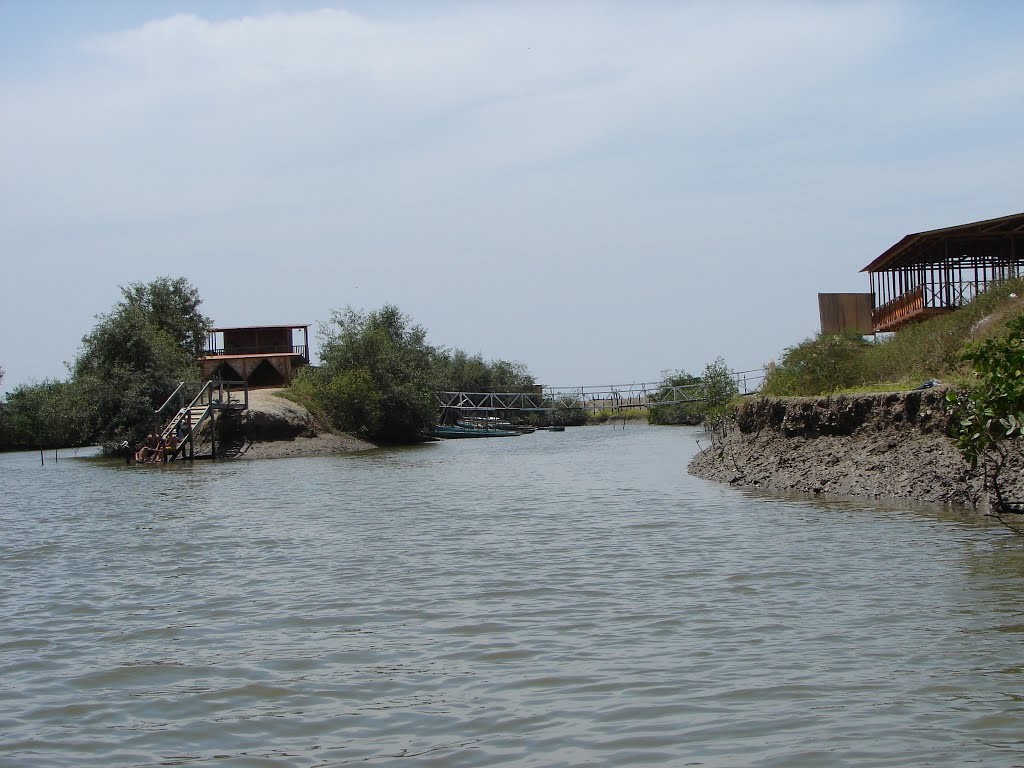
Crabs and black shells
Crabs live amongst the mangroves and they are used to prepare the best vegetable soup of Peru, here in the middle of the mud, people submerge their arms so that they can try to trap the crabs within this dark and brown colour of the mangroves.
This is not a simple task as these people that you will see on your trip have developed a special technique to carry out this activity that has been passed down from generation to generation. I wouldn't dare to try it... would you? These crab-catchers have my utmost respect!
Other, less well-known shells are the "donkey's legs", which can also be found within the Mangroves of Tumbes, your trip through the them will take approximately half a day.
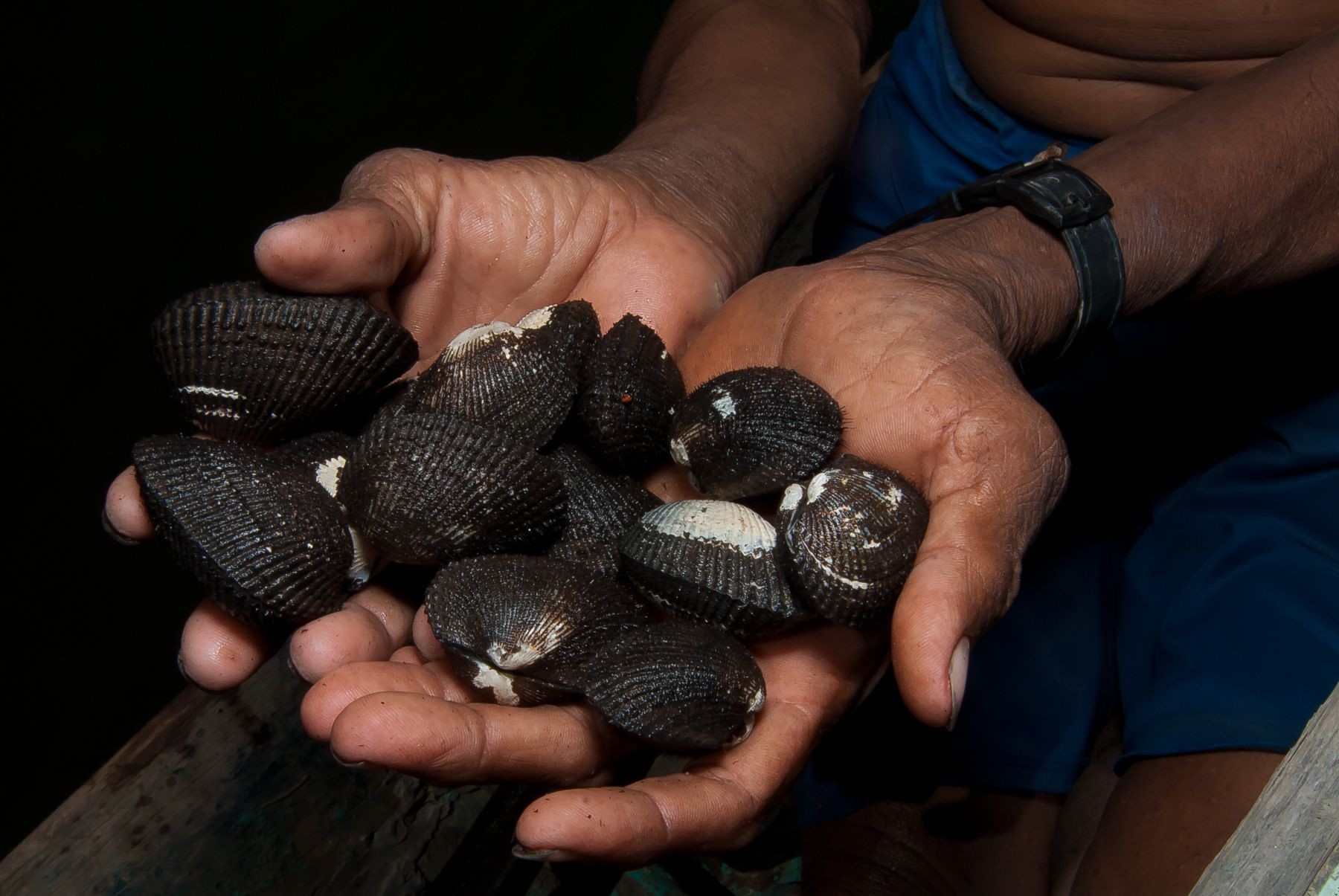
Nature, birds, black shells and natural water half-salty and half fresh that mixes in the Zarumilla river with the Peruvian sea. After stepping on the land you can walk to see detailed information about all of the animals you can find there, within these labyrinths lives all of the fauna of this sanctuary.
The mangrove tree is a species of plant that lives between fresh and salt water, the plant absorbs the fresh water and this is how it survives.
At the Capones Point you can see the border between Peru and Ecuador, the desolate beaches invite you to take a quick dip in the water...
The mangrove island belongs to the birds, therefore when you come here you need to respect the nature in order to maintain each and every unique environment in this sacred land.
The abundant nature includes 105 species of fish and almost 200 species of birds, it is a sanctuary that is worth visiting.
Green Waters
The city of Tumbes is only 32 km, or half an hour, away from Ecuador. To get to Ecuador you need only take one of the buses that goes towards Zarumilla and from here we can cross the border! We can then take advantage of exploring the country in the north in the area of the Green Waters.
Green Waters is the entrance and exit for the northern part of Peru. In this area, the most that you will find is the street businesses that are here due to the traffic that runs between the two countries.
Green Waters was born after the conflict between Peru and Ecuador and this land was given to people so that they could use it without knowing that, later on, it would become a focal point of trade between Peru and Ecuador. Textiles and things from every corner of the country are sold here to Ecuadorians and to those who are encouraged to pass through this area to visit it.
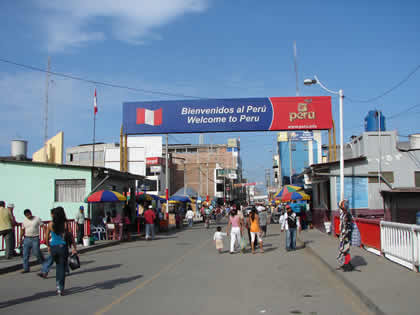
For example, Peru sells watermelon and onions whilst Ecuador sells pineapple and agave. Furthermore, the large scale movement is made mostly to be able to cross the border and the rest is small and the rich lives here.
Huaquillas
The good thing was that, after so much conflict, peace brought integration between the two nations. For example, they don't stop or control migration in the Huaquillas area, so you can pass through easily in your car. The two areas are divided only by a bridge, being in itself a single large city, Ecuadorian and Peruvian.
Ecuador is famous for its bananas, so here you can take advantage of trying the bananas, as well as the frozen coconut juice to scare off the more than 38 degrees heat that there is in this Ecuadorian zone.
Backpackers also arrive throughout this area of Montañita or from Montañita to Mancora. Although Huaquillas is more modern than the Peruvian area, we can't deny that there is business throughout both places and furthermore, here they also accept soles, so you can come without any problems.
Here there are the same ingredients as Peru, but we can't deny that in Peru our own products have created a marvellous and unique gastronomy.
One afternoon would be enough to be able to explore these passages that cross the border and then after you can return to our own Peruvian territory and continue with visiting the enigmatic beaches that we have all over the north of Peru.
As we have seen, Tumbes is a small region but nevertheless, it is synonymous with biodiversity and rich traditions where you can find mangroves, the river, sea-life, fish and incredible beaches.
Remember, and I will repeat it too, remember to help the local trade! The hand made crafts in this area, we need to help them by buying their products which increases tourism and the economy in this area. There is no doubt about it that whilst we explore Peru we must remember to appreciate the privilege of living in this nation that has so much diversity and a long legacy.
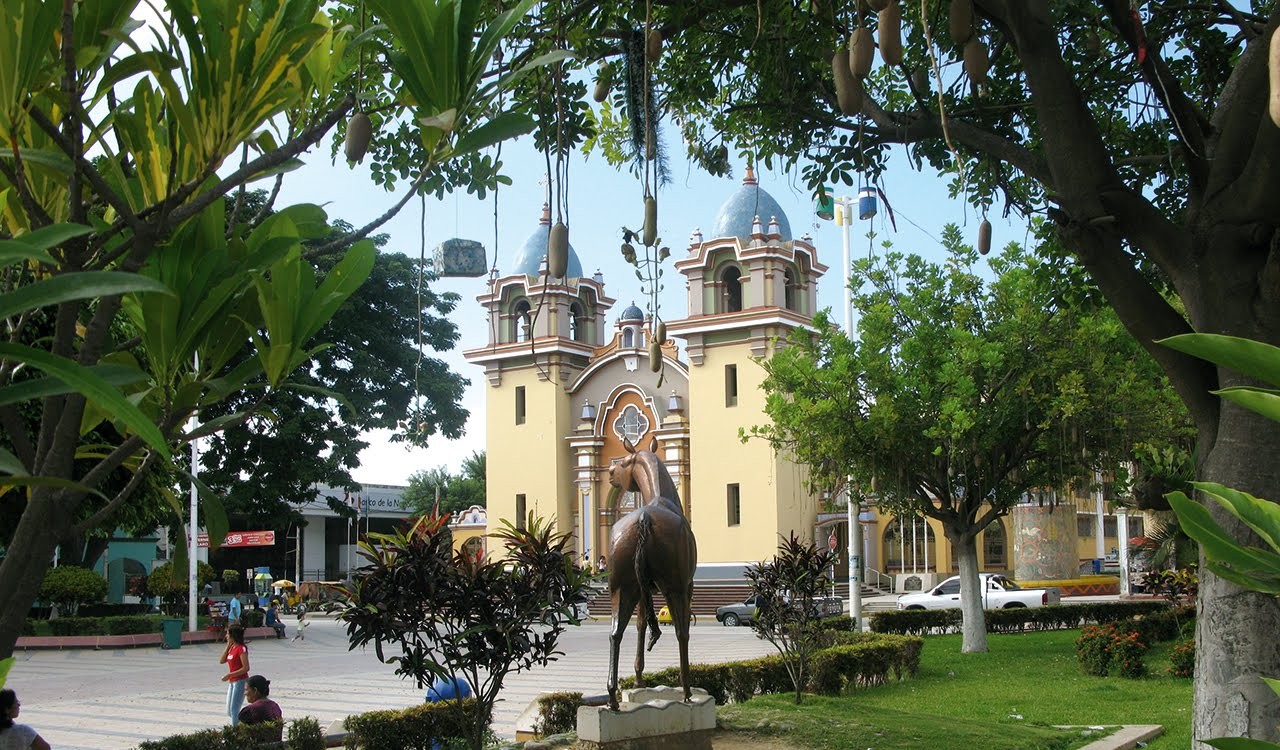
Don't worry because the great weather in Tumbes is all year round. The sun shines every day here! Come and explore this part of Peru my friends, I have only been able to visit it once, but nevertheless I would die to come back again... To listen to the music that I have not said much to you about, it is for example, by the Peruvian called Tondero. I am listening to it right this second to fill myself with inspiration whilst I write this blog.
Thank you so much for reading this!
I hope with all my heart that this information will be useful to you and that you continue to travel through Peru, the country with hidden treasures.
Until next time, viva el Perú!
Photo gallery
Content available in other languages
- Español: Tumbes
Want to have your own Erasmus blog?
If you are experiencing living abroad, you're an avid traveller or want to promote the city where you live... create your own blog and share your adventures!
I want to create my Erasmus blog! →















Comments (0 comments)